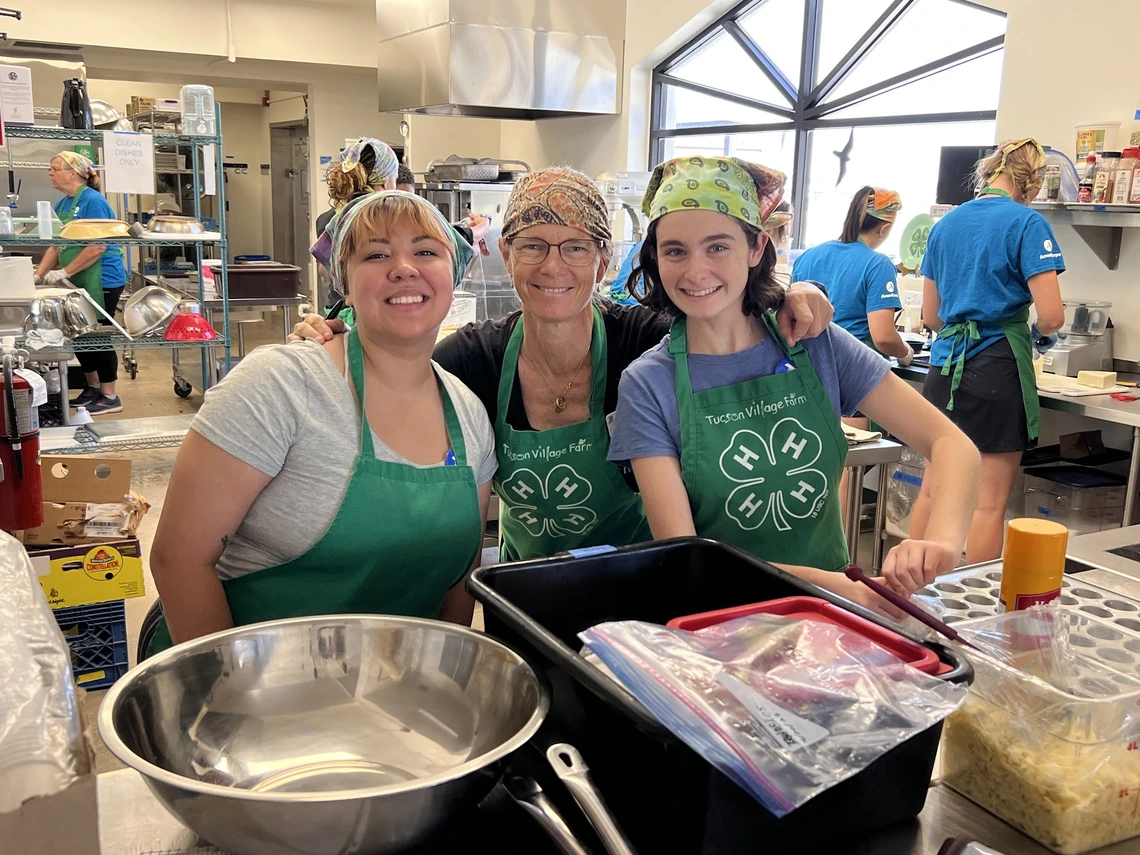Nutrition a Thread Through History for Women in Extension
From the earlierst days of Cooperative Extension, women have played a vital role in keeping Arizona healthy.

Tucson Village Farm hosts a variety of programs - including cooking classes - that Arizonans make healthy food choices.
David Gilmore
From December 1924 through June 1925, Cooperative Extension Agent Laura Mae Seward zigzagged around Pinal County on a mission to help Arizona families thrive, which remains an overarching goal of Extension work today.
Seward visited 137 homes in 11 communities during 77 days on the road, spending much of her 65 days in the office writing 384 letters, according to the annual report she filed at the end of 1925. She was part of a small group of home demonstration agents – almost all of them women– across the state tasked with making sure farm and ranch households grew healthy food, stored and prepared it safely, and were ready to face the challenges of desert agriculture, all of which Extension still does.
A key focus has always been nutrition, then via the Keep Growing Project and now through programs like the Garden Kitchen, a seed-to-table program teaching the basics of growing food and shopping on a budget, and the Supplemental Nutrition Assistance Program – Education (SNAP-Ed), a nationwide nutrition education and obesity prevention program for low-income families funded by the United States Department of Agriculture (USDA) Food and Nutrition Service.
In 1925, Seward’s goals included getting 75 percent of kids in four schools up to average weight and getting them to drink a quart of milk per day. In Keep Growing, children learned health-related songs and performed a play, “Health Versus Underweight.” A teacher in Signal Peak asked for help tracking the weight of her students to justify school lunch, Seward reported.
“Fourteen children were weighed, and ten of these were underweight for their age and height. One was eleven pounds underweight. Mrs. Anderson wants to do the ‘Keep Growing’ work regularly this year,” she wrote in her report.
Today, just as it was a century ago, many Family and Consumer Health Sciences (FCHS) agents are women, and they still help Arizona families get and stay healthier.
Main goals of SNAP-Ed include improving nutrition and dietary habits and reducing hunger while increasing physical activity and decreasing sedentary behavior, said Vanessa A. Farrell, a nutritionist and interim director of the University of Arizona SNAP-Ed program.
“The FCHS really meet the needs of their communities - teaching people how to can foods, food safety - really giving practical information not taught in schools. There’s no home economics in schools anymore. People don’t know how to cook,” Farrell said.
Though affording meals is a challenge for some U.S. families, the threat of widespread food shortages has evolved into a different threat - ample yet potentially unhealthy food.
“Inexpensive food, which can contain more added sugars, has become abundant. We're getting away from whole foods, and processed foods are more available,” Farrell said.
Extension tries to facilitate getting timely, evidence-based health information out to the communities. Recommendations from the USDA have evolved over time, but each evolution from food groups to the food pyramid to the current My Plate took years to develop, and each rendition includes the latest nutrition and physical activity information, Farrell said.
Classes and reliable online information provided by Extension offices across the nation can help families keep up to date on healthy lifestyle recommendations. For more than a century, Extension FCHS agents have traversed Arizona, visiting homes, teaching classes, and arming families and communities with a wide array of food information and instruction, and they won’t be stopping anytime soon.

